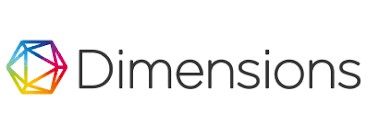DAYA TERIMA BOLU LAPIS KOJO UBI JALAR KUNING SEBAGAI SNACK RENDAH KALORI DAN PENAMBAH SERAT
Abstract
Background: Obesity was defined as abnormal or excessive fat accumulation that can impair health. One strategy to overcome the problem of obesity was to provide low-calorie foods. One of the local foods that can be used as a low-calorie meal and fiber enhancers was the yellow sweet potato cake with kojo layer. The purpose:This study aims to determine the best formulation of yellow sweet potato cake with kojo layer.
Methods: This study used an experimental design with a non-factorial completely randomized design (CRD). The ingredients used were yellow sweet potato, wheat flour, eggs, stevia sugar, salt, margarine, and low-fat milk
Results: The results showed that the selected yellow sweet potato cake with kojo layer with F2 treatment (60% addition of yellow sweet potato) with a total energy content of 197.39 Kcal, 13.55% protein, 2.11% fat, 31.05% carbohydrate (per 100 grams).
Conclusion: Yellow sweet potato kojo layer sponge can be used as a low -calorie food alternative and fiber enhancers.
References
Arsa, Made. 2016. Proses Pencoklatan (Browning Process) pada Bahan Pangan. Denpasar: Fakultas Matematika Dan Ilmu Pengetahuan Alam, Universitas Udayana. (E-Skripsi). Available at :https : // repositori. unud. ac. Id / protected / storage / upload / repositori / 39d25529666391a5efb308dbdc412214.pdf (Diakses 23 April 2021).
Badan Litbangkes Kementerian Kesehatan RI, 2018. Laporan Hasil Riset Kesehatan Dasar (Riskesdas) per Provinsi. Available at: https://www.litbang.kemkes.go.id/laporan-riset-kesehatan-dasar-riskesdas/ (Diakses: 04 Februari 2021).
Depkes RI., 2001. Komposisi Zat Gizi Makanan Indonesia.Badan Penelitian dan Pengembangan Kesehatan, Pusat Penelitian dan Pengembangan Gizi, Bogor.
Fatimah, N. 2013. Karakteristik Fisik, Kimia dan Sensoris Kue Bolu Kojo dengan Subtitusi Mocaf sebagai Pengganti Tepung Terigu (Skripsi). Palembang: Fakultas Pertanian, Universitas Sriwijaya. Available at: file:///C:/Users/Asus/Downloads/511-1004-3-PB.pdf (Didownload: 12 Januari 2021)
Harfiyanti, M, ST. 2018. Analisis Kandungan Zat Gizi Muffin Ubi Jalar Kuning (Ipomoea Batatas L.)Sebagai Alternatif Perbaikan Gizi Masyarakat. Makassar: Fakultas Kedokteran Dan Ilmu Kesehatan, Universitas Islam Negeri Alauddin. (E-Skripsi). Available at: http://journal.uin-alauddin.ac.id/index.php/Al-Sihah/article/view/5424 (Diakses 24 April 2021).
Kemenkes RI. 2013. Riset Kesehatan Dasar. Jakarta : Badan Penelitian dan Pengembangan Kesehatan Kementerian Kesehatan Republik Indonesia. Available at: file:///C:/Users/Asus/Downloads/profil-kesehatan-indonesia-2013.pdf(Didownload: 12 Januari 2021)
Kurniawatati.2012. Pengaruh Substitusi Tepung Terigu dengan Tepung Tempe dan Tepung Ubi Jalar Kuning terhadap Kadar Protein. Semarang: Ilmu Gizi. Universitas Diponogoro. Available at: Sari, F.D.N., dan Eka Nenni Jairani. 2019.
Uji Daya Terima Bolu Kukus dari Tepung Kulit Singkong. Dalam: Jurnal Dunia Gizi, Vol. 2, No. 1, Juni 2019: 01-11 (E-Journal). Available at: Shewfelt, R.L. 2014.
Pengantar Ilmu Pangan. Jakarta: Penerbit Buku Kedokteran EGC.Truswell, A.Stewart dan Jim Mann, S. T. (2012).
Buku Ajar Ilmu Gizi alih bahasa Andry Hartono Editor edisi Bahasa Indonesia Mochamad Rachmad editor penelaras Cahya Ayu Agustin Etika Rezkina Ed-4 . Jakarta: Penerbit Buku Kedokteran.
World Health Organization. 2015. Obesity and Overweight. Available at: http://www.who.int/mediacentre/factsheets/fs311/en/(Diakses : 04 Februari 2021)
Copyright (c) 2021 JGK : Jurnal Gizi dan Kesehatan

This work is licensed under a Creative Commons Attribution-ShareAlike 4.0 International License.
Authors who publish with this journal agree to the following terms:
- Authors retain copyright and grant the journal right of first publication with the work simultaneously licensed under a Creative Commons Attribution License that allows others to share the work with an acknowledgement of the work's authorship and initial publication in this journal.
- Authors are able to enter into separate, additional contractual arrangements for the non-exclusive distribution of the journal's published version of the work (e.g., post it to an institutional repository or publish it in a book), with an acknowledgement of its initial publication in this journal.
- Authors are permitted and encouraged to post their work online (e.g., in institutional repositories or on their website) prior to and during the submission process, as it can lead to productive exchanges, as well as earlier and greater citation of published work










